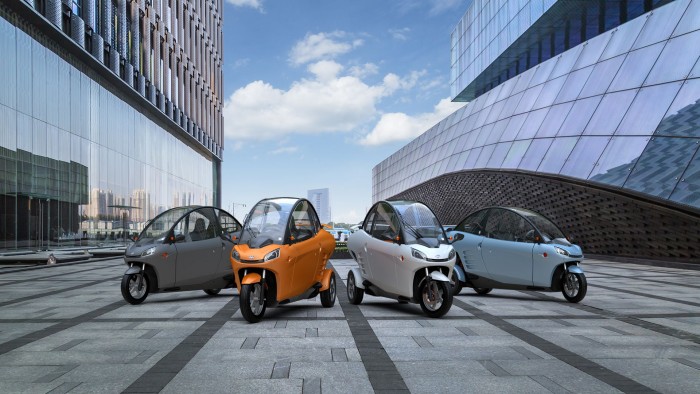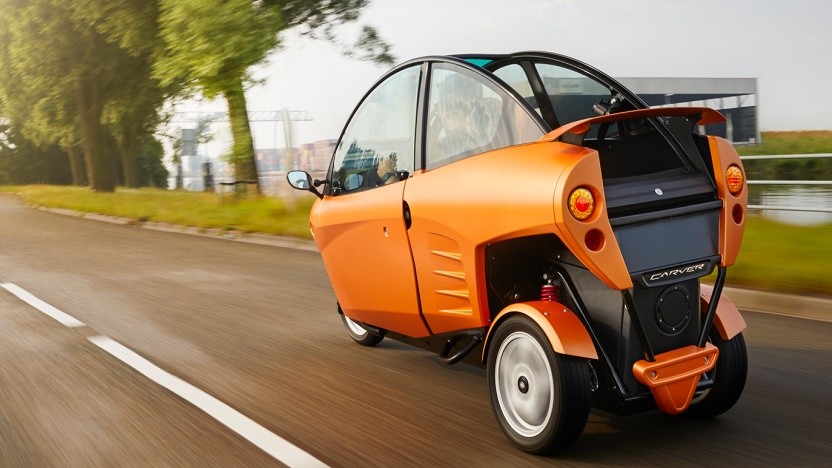Under the name Carver is a cabin scooter with E-drive arise. The Dutch company had already failed around the turn of the millennium with the same vehicle concept, but then put on a combustor.
August 23, 2019, 8:45 am,
Andreas Donath

Carver
(Image: Carver)
The new Carver is a cabin scooter with two seats arranged behind each other, which is powered by a small electric motor and should come with a battery charge 100 km. The special feature of the vehicle is its tilting technology, which allows it to lay as on a motorcycle up to 45 degrees in the curve.
Job market
IGEL Technology GmbH, Augsburg
BWI GmbH, Meckenheim
The vehicle was already offered with a Daihatsu three-cylinder, but the manufacturer had to declare bankruptcy because of too low sales figures, which were probably caused by the then price of 60,000 euros. The new version should not only be cheaper, but also more agile thanks to the electric drive.
The carver stands on three wheels – one in front and two in the back. Both the rear and the front each have an electric motor with 2 kW each and a maximum torque of 150 Nm. According to the manufacturer, the carver accelerates from 0 to 45 km / h in about 8 seconds. This is also the maximum speed of the vehicle, which is planned as a covered scooter replacement. The roof can be opened and the trunk of 75 liters capacity allows a wide range of uses of the vehicle.

Carver (Image: Carver)
The battery with a capacity of 5.3 kWh should allow a range of 100 km. The charging takes place via a normal power outlet in about 6.5 hours.
The Carver should be offered from autumn 2019 for around 8,000 euros. Due to the speed and performance limitation, he is treated as a light vehicle and can be equipped in the future with insurance license plates and driven with the driving license class AM. test drives are currently offered by the manufacturer, according to website only in the Netherlands.
Topics Pages:
electric car
automobile
electromobility
sustainability
technology
science
